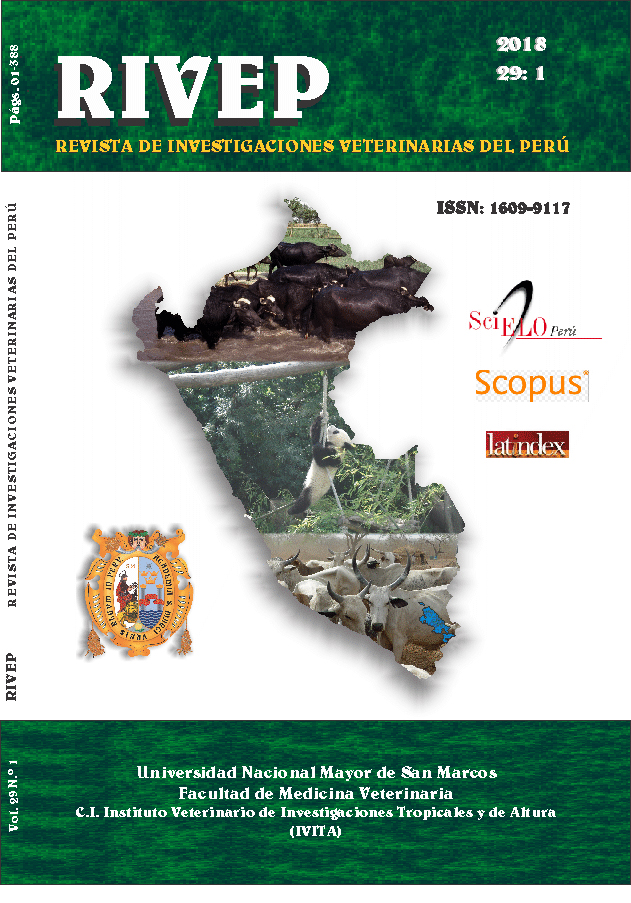Morphological identification of Culicoides spp described as Orbivirus transmitters trapped in sheep farms in Pucallpa, Peru
DOI:
https://doi.org/10.15381/rivep.v29i1.14203Keywords:
ceratopogonids, biting midges, Culicoides, sheep, tropics, Pucallpa, PeruAbstract
The aim of the present study was to identify ceratopogonids of the genus Culicoides (Latreille, 1809) involved in the transmission of Orbivirus. The catches were made in two farms located close to Santa Rosa de Lima village, Ucayali, Peru, an area characterized by the presence of shrubs, trees, and wetlands, as well as the breeding of hair sheep, horses and poultry. During three consecutive nights, 7930 specimens of Culicoides spp were captured through five CDC ultraviolet light traps installed next to the flocks. The identification of the Culicoides was done with the support of atlases of photographs of the wing of Neotropical Culicoides and taxonomic keys for each species. Five species were registered within the subgenus Hoffmania (Guttatus and Hylas groups) and another without subgenus classification (Fluvialis group). It was identified 7839 (98.8%) female Culicoides and 91 (1.2%) males. According to relative abundance, the main species was C. insignis (94.8%), followed by C. foxi (3.2%) and C. ocumarensis (1.3%). Other species such as C. pseudodiabolicus, C. hylas and C. leopoldoi were present in densities lower than 0.5%. Also, it was observed a Culicoides sp (n=31) that is in the process of identification.Downloads
Downloads
Published
Issue
Section
License
Copyright (c) 2018 Dennis Navarro M., Hermelinda Rivera G., Abraham Cáceres L., Juan Rondón E.

This work is licensed under a Creative Commons Attribution-NonCommercial-ShareAlike 4.0 International License.
AUTHORS RETAIN THEIR RIGHTS:
a. Authors retain their trade mark rights and patent, and also on any process or procedure described in the article.
b. Authors retain their right to share, copy, distribute, perform and publicly communicate their article (eg, to place their article in an institutional repository or publish it in a book), with an acknowledgment of its initial publication in the Revista de Investigaciones Veterinarias del Perú (RIVEP).
c. Authors retain theirs right to make a subsequent publication of their work, to use the article or any part thereof (eg a compilation of his papers, lecture notes, thesis, or a book), always indicating the source of publication (the originator of the work, journal, volume, number and date).










